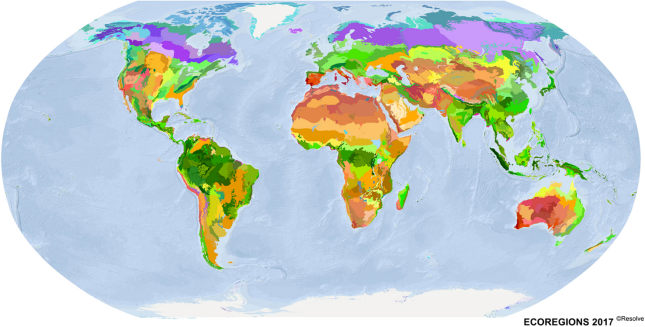-
To Reach Global Climate Targets, Wildlife and Nature Must Be Protected, Report Warns
April 22, 2019 By Amanda King
The Paris Agreement in December 2015 set targets to limit global climate change. To prevent average global temperatures from rising 2°C above preindustrial levels, it recommends limiting the temperature increase to 1.5°C above preindustrial levels. “But the Paris Agreement is only a half-deal; it will not alone save the diversity of life on Earth or conserve ecosystem services upon which humanity depends,” say the authors of a new article published in Science Advances. Their article proposes a Global Deal for Nature (GDN), a time-bound, science-driven plan to save the diversity and abundance of life on Earth.
The best way to limit the temperature increase to less than 1.5°C, the authors argue, is to maintain and restore at least half of the Earth’s land as intact natural ecosystems coupled with energy transition measures. Their plan prioritizes three major themes—protecting biodiversity, mitigating climate change, and reducing threats to intact ecosystems and persistence of species. The plan’s milestones and targets could both complement and reinforce the Paris Climate Agreement.
Protecting Biodiversity
The primary biodiversity target of the plan is to have 30 percent of the Earth formally protected and an additional 20 percent designated as climate stabilization areas (CSAs) by 2030. These areas would concentrate in habitats where mangroves, tundra, other peatlands store reserves of carbon and other greenhouse gases and prevent large-scale land cover change. To figure out how to achieve this milestone, the authors separated the world’s ecoregions (representative clusters of habitat and species types) into four categories based on their potential for protection. In Category 1 areas, the 2030 goal would be achieved with 30 percent or more of the habitat protected. In Category 4 areas, less than 20 percent of the total habitat would survive. The authors project that 67 percent of terrestrial ecoregions can meet the 30 percent target. They include freshwater and marine targets and extend the pact to all realms of the biosphere.
Mitigating Climate Change and Reducing Threats
“We have a narrowing window of time within which to save biodiversity while simultaneously mitigating the worst forthcoming effects of climate change,” said co-author Greg Asner, Director of the Center for Global Discovery and Conservation Science at Arizona State University. The Global Deal’s target of protecting 30 percent of the Earth as high-priority conservation areas may not be enough to turn around the approaching 1.5°C temperature increase. To support this effort, the policy recommends using climate stabilization areas and other effective area-based conservation measures to serve as carbon storehouses and inhibit greenhouse gas emission.
One potential carbon storehouse the authors mention is indigenous lands, which account for 37 percent of all remaining natural lands on Earth. They store a vast amount of carbon. The authors propose that a climate stabilization policy could assist indigenous peoples, keep lands intact, and/or secure tenure rights.
On the Road to Beijing 2020
“The United Nations Convention on Biological Diversity in Beijing in 2020 will help encourage the world’s leaders to advance climate targets and the Sustainable Development Goals by agreeing to adopt new global targets for biodiversity conservation. We know that none of these targets can be achieved without securing half of the planet in a natural state. To achieve this ambitious goal, global leaders must agree to an interim target to protect 30 percent of the planet by 2030,” said Jonathan Baillie, Executive Vice President and Chief Scientist of the National Geographic Society. “The Global Deal for Nature,” said Asner, “is a roadmap to help us all get there together.”
Read More:
- What is next for climate mitigation after Paris?
- Measuring the impact of biodiversity conservation means learning by doing, building on success, and learning from failure.
- Protecting biodiversity could limit climate change and protect us.
Sources: Science Advances, United Nations Framework Convention on Climate Change.
 A Publication of the Stimson Center.
A Publication of the Stimson Center.



